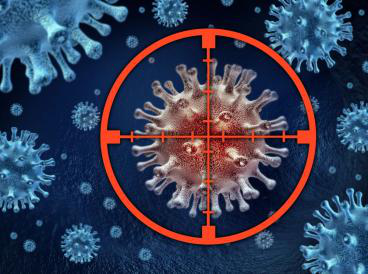
Should cancer screening be done? Each of the 9 high-incidence cancers has “screening standards”
Cancer is one of the most dangerous diseases that threaten human life and health. Although cancer is not a terminal illness, the diagnosis of cancer is tantamount to a “bolt from the blue” for many people.

The World Health Organization proposes that nearly half of cancers can be prevented; 1/3 of cancers can be detected and diagnosed early through cancer screening, especially breast cancer, cervical cancer, lung cancer, and colorectal cancer, so as to obtain more cures opportunity.
What is cancer screening?
Routine physical examination is like a big sieve. The “big stones” are screened out first, but the smaller stones may leak out. The physical examination cannot cover all the organs, and there is still a risk of tumors in the unchecked organs.
There are two types of tumor growth: explosive and occult. Early tumor patients in the occult stage of tumor growth are difficult to find.
Cancer screening is a physical examination for common cancers based on cancer risk assessment. It allows subjects to know their own cancer risk and detect early cancer or precancerous lesions for early intervention.
Before the physical examination, professional doctors will ask the examinee’s physical condition, living habits, past medical history and family genetic history carefully, etc., and then make the corresponding examination plan. The items mainly include: routine items, imaging diagnosis (ultrasound, mammography, low-dose CT) Etc.), tumor marker inspection, and endoscopy if necessary.
The physical examination report should be interpreted by an experienced general examiner at or above the deputy senior level.
There is a cancer screening list for men and women
Before cancer screening, it is necessary for everyone to understand the common cancer types and high-risk groups, and combine their own age, family history, gender, living habits and other factors to select screening items initially .
Experts have sorted out the four most common cancers and common cancers in men and women, and provide you with a comprehensive screening list.

No.1
High incidence of cancer in the whole population
Lung cancer
High-risk groups: age 50 to 75 years old; smoking more than or equal to 20 packs per year, including those who have smoked but have quit for less than 15 years; long-term passive smokers (basically daily exposure, more than 20 years); asbestos, beryllium, uranium, radon A history of occupational exposure such as exposure; a history of chronic obstructive pulmonary disease or chronic pulmonary fibrosis; a history of malignant tumors or a family history of lung cancer.
Screening method: low-dose spiral CT of the chest once a year. If lung nodules are found, follow the doctor’s recommendation or visit a specialist for further examination and monitoring
Liver cancer
High-risk population: 40-69 years old; suffering from hepatitis B, hepatitis C, or carrying hepatitis B, hepatitis C virus; cirrhosis; alcoholic liver or other liver diseases; family history of liver cancer.
Screening method: do abdominal ultrasound examination every six months; high-risk groups receive serum alpha-fetoprotein (AFP) examination every six months, and it is recommended to do hepatitis B virus surface antigen and hepatitis C antibody tests; if abnormalities are found, further enhanced CT examinations should be performed.
Colorectal cancer
High-risk population: 45-74 years old; first-degree relatives have a history of colorectal cancer; I have a history of other malignancies; have had intestinal polyps; history of chronic appendicitis or appendectomy; history of chronic biliary disease or cholecystectomy; long-term (recent) 2 years persistent) chronic constipation or chronic diarrhea, anorectal symptoms such as mucus and blood in the stool for 2 consecutive weeks
Screening method: the general population will have an immunochemical fecal occult blood test (FIT) every year; stool DNA testing will be done every 1 to 3 years; fine magnifying colonoscopy every 5-10 years; high-risk groups determine the time of the next inspection based on the results of the first inspection.
Stomach cancer
High-risk population: 45 years of age or older; long-term living in areas with high incidence of gastric cancer; Helicobacter pylori infection; past precancerous gastric diseases such as chronic atrophic gastritis, gastric ulcer, gastric polyps, postoperative residual stomach, hypertrophic gastritis, pernicious anemia ; Bad lifestyle habits that may cause gastric cancer, such as smoking, drinking, eating high-salt or pickled diets, etc.; have first-degree relatives (parents, children or siblings of the same mother) who have gastric cancer.
Screening method: Serum pepsinogen and gastrin-17 test can help determine whether there is gastric mucosal atrophy and degree of atrophy. It can be used as an annual routine screening item; Helicobacter pylori test can be used to determine whether there is infection. Routine screening items; when the above-mentioned examinations find abnormalities, it is recommended to do fine magnifying gastroscopy. High-risk groups with a family history of gastric cancer should do regular gastroscopy according to the doctor’s recommendation.
You can also do fine magnifying gastroscopy directly, which is the gold standard for early gastric cancer screening.
No.2
High incidence of cancer in women
Breast cancer
High-risk population: 45 years of age or older; first-degree relatives who had breast cancer before the age of 50; have history of contralateral breast cancer; carry genetic mutations that cause breast cancer.
Screening method: color Doppler ultrasound examination, once every 1 to 2 years after the age of 45; high-risk groups can be examined by mammography every 1 to 2 years.

Thyroid cancer
High-risk population: a history of head and neck radiation exposure or exposure to radiation dust in childhood; head and neck radiotherapy for other diseases; past or family history of differentiated thyroid cancer (DTC), medullary thyroid cancer, etc.; thyroid nodules It is larger than 1 cm, and the nodules grow rapidly and grow to more than 1 cm within half a year; or the thyroid nodules are larger than 1 cm, accompanied by persistent hoarseness, dysphonia, difficulty swallowing or breathing, and vocal cord lesions (inflammation, Polyps, etc.); Thyroid nodules are larger than 1 cm, accompanied by cervical lymphadenopathy; Calcitonin is higher than the normal range.
Screening method: General population under 30 years old can have a clinical neck physical examination every 2 to 3 years; for high-risk groups or people over 30 years old, it is recommended to have neck ultrasound examination every year; women before pregnancy and at the end of lactation period are recommended Perform a neck ultrasound examination respectively.
Cervical cancer
High-risk population: married women or women with a history of sexual life for 3 years; have had HPV infection, weakened immune function, have a history of exposure to intrauterine diethylstilbestrol, or have had cervical intraepithelial neoplasia grade 2 or 3, or cervical adenocarcinoma in situ , women who have received treatment for cervical invasive cancer.
Screening method: For those aged 24 to 29, a cytology screen should be performed every 3 years; for those aged 30 to 64, you can choose a cytology screen every 3 years or a HPV screen every 5 years; Both cytology and HPV screening are negative, which can be changed to once every 5 years; for those over 65 years of age, if 3 consecutive cytology screenings are negative or 2 consecutive HPV negatives in the past 10 years, no cervical intraepithelial tumor Change (CIN) medical history, no need to screen again.
If cervical lesions have reached CIN 2-3 or have a history of adenocarcinoma in situ, screening should be continued for 20 years after the lesions have resolved naturally or after clinical treatment.
No.3
High incidence of cancer in men
Esophageal cancer
High-risk groups: 40-69 years old; prefer pickled and smoked foods; prefer hot foods and leftovers; suffer from upper gastrointestinal diseases such as reflux esophagitis; have a family history of esophageal cancer; live in the esophagus for a long time High-incidence area of cancer.
Screening method: high-risk groups need gastroscopy, and the next examination time depends on the results of the first examination (follow the doctor’s recommendation).

Prostate cancer
Screening methods: digital rectal examination, which can be performed once a year; ultrasound examination; high-risk groups can be tested for prostate antigen (PSA) every two years.
3 questions about cancer screening
After deciding to do cancer screening, many people will have questions. Is the screening program as comprehensive as possible? Are tumor markers necessarily accurate? The following 3 common questions will be answered by experts.
1. Is the more items screened, the better?
Cancer screening does not mean that the more items and the more expensive, the better. It is not recommended for everyone to do a full set of projects. One is to avoid economic waste, and the other is that chest radiographs, CT and other examinations are damaging, and doing too much may cause some damage to the body.
In addition, some medical examination institutions use PET-CT (a novel imaging technology) as a high-end supplement for cancer screening. Experts suggest that PET-CT is not recommended for routine cancer screening unless there is a special need, or other examination results have a clear tendency to suspect cancer, no matter from an economic or radiation point of view.

2.Are tumor markers accurate necessarily?
Tumor markers are substances that are shed from the cell surface during the proliferation of tumor cells, or are produced by tumor cells, or produced by immune reactions with the human body. However, they also exist in benign tumors, embryonic tissues and even normal tissues. , Inflammation, etc. may make it rise.
Tumor markers are not sensitive enough and can only be used for physical examination rather than screening in my country. Experts emphasize that the missed detection rate of tumor markers is high, and not every cancer has a specific tumor marker.
3.How to do follow-up treatment?
Cancer screening is highly professional, so we must choose a qualified institution, especially the qualifications of medical examiners and report interpretation doctors.
Cancer screening is not “one-time-for-all”. Different high-risk groups should be screened regularly under the advice of specialists. If signs of cancer are found, they should be diagnosed and treated in time.
Comments